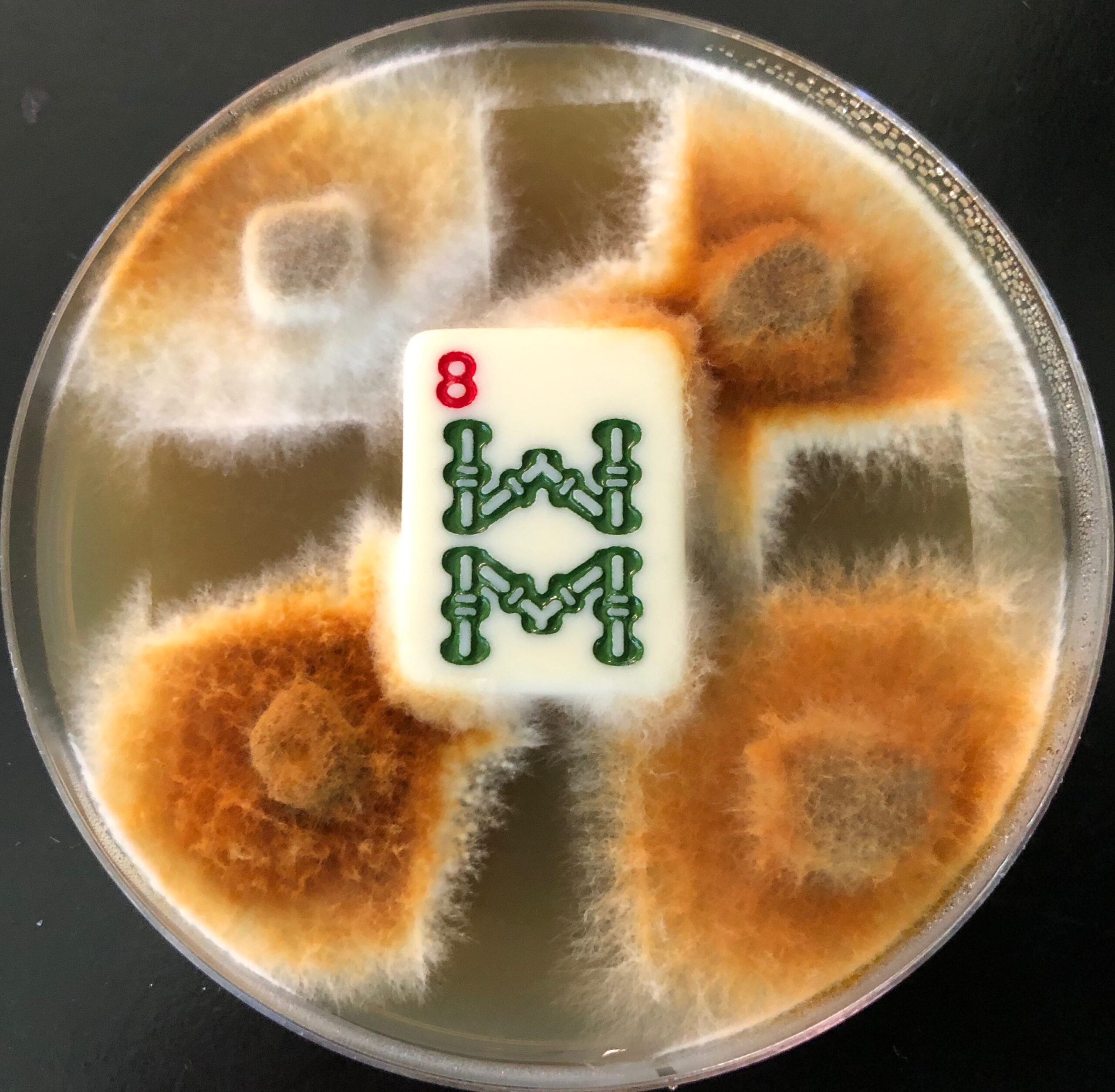Do toxic, glowing fungi play Mahjong? Mycologists Rudy Diaz, Resident Mycologist of the Los Angeles Mycological Society, and CSUN Professor of Biology David Bermudes didn’t really answer this question in a study of the bioluminescent mushroom species Omphalotus olivascens — but they did use Mahjong tiles in one of their key tests of the fungus.
Omphalotus olivascens, largely endemic to California, produces a poisonous mushroom that glows in the dark. It also produces a number of potent toxic compounds, some of which have potential as pharmaceuticals like anti-cancer drugs. Diaz and Bermudes collected spores of O. olivascens from one such mushroom, and isolated 47 independent fungal cultures germinated from spores, and from the tissue of the parental mushroom. They studied the strains for variation in traits including bioluminescence, the production of fluorescent compounds, and the production of the toxic compounds that kill both mycobacteria and human cancer cells. Mahjong tiles played a key role in testing the strains’ mating compatibility, which required Diaz and Bermudez to grow combinations of strains on the same agar dish, with physical barriers provided by the tiles.
The two mycologists found remarkable diversity in many of the features they measured, a key first step to understanding the genes and biochemistry behind the traits. Their work appeared in the journal Microorganisms.
Image: A windows (4 cover slips) barrier (mahjong game tile) plate with fungal cultures being tested for their mating-type compatibilities.

